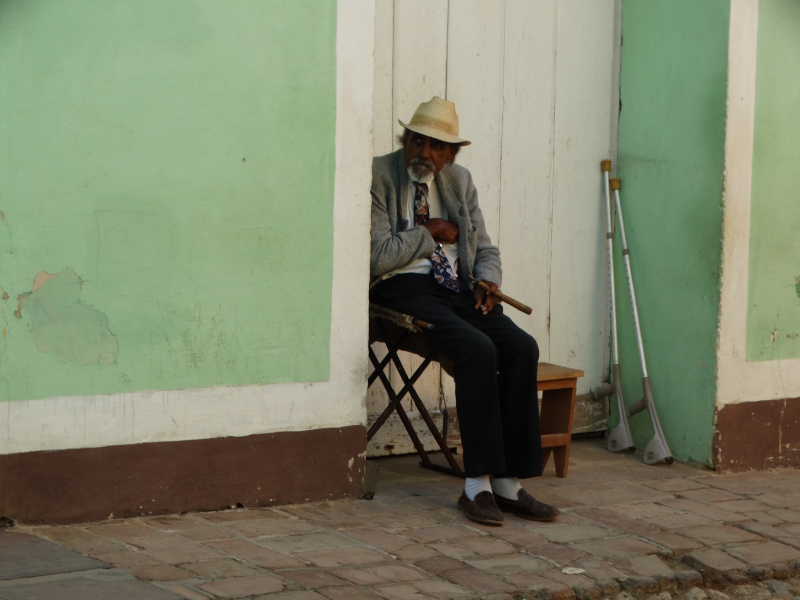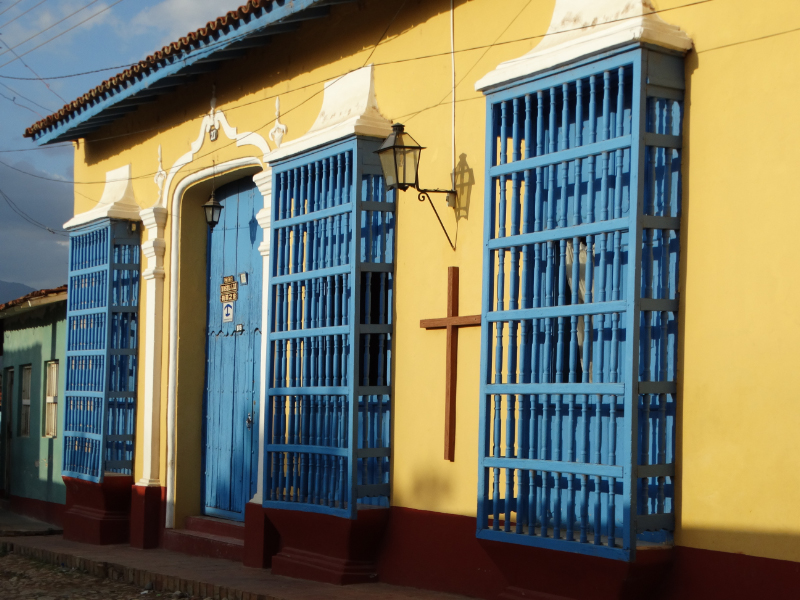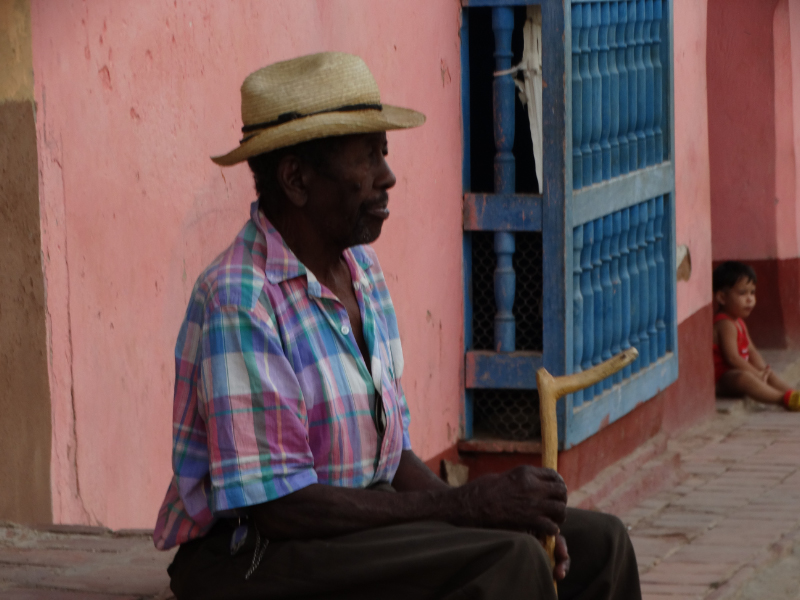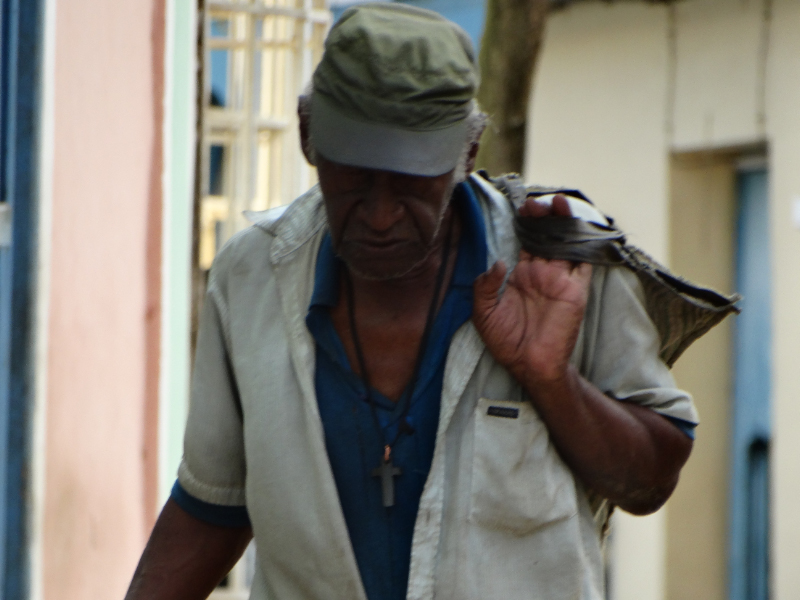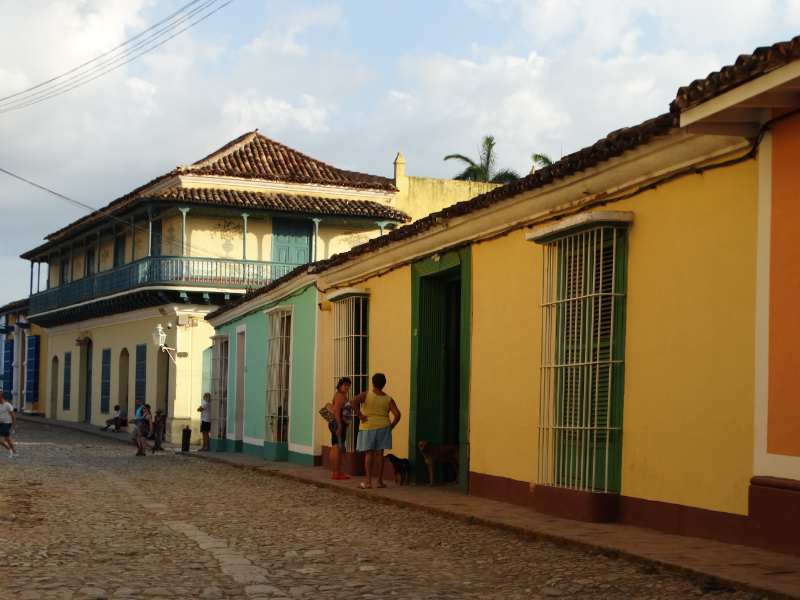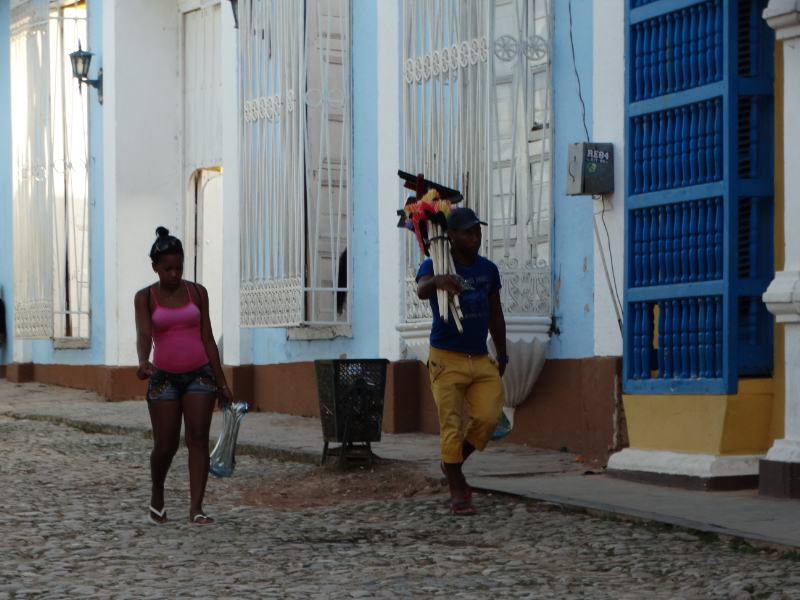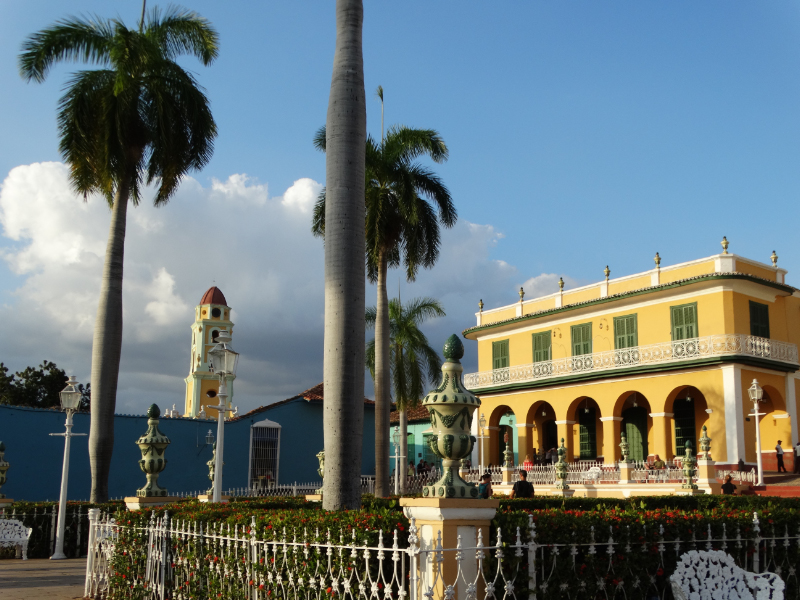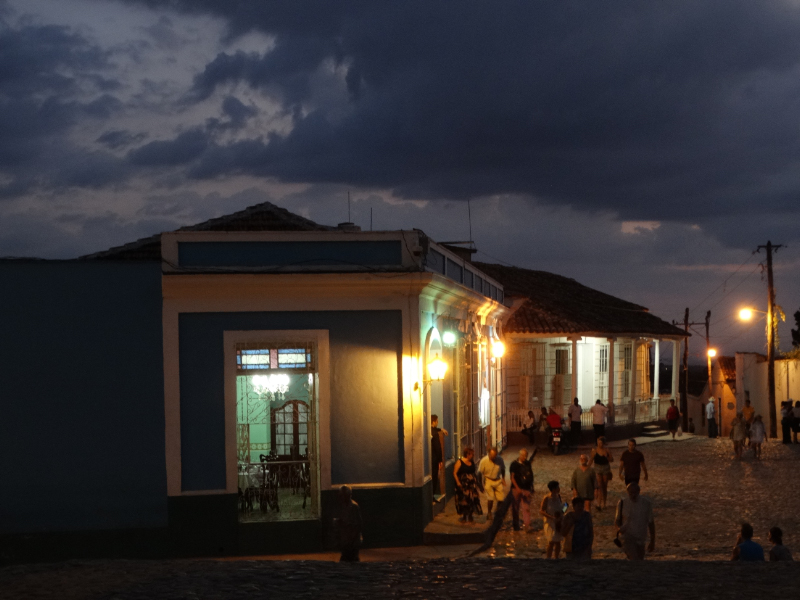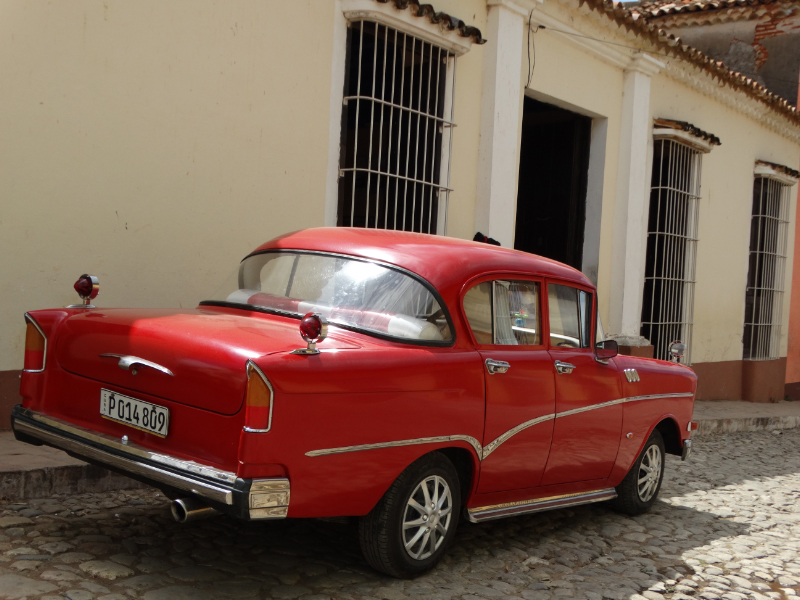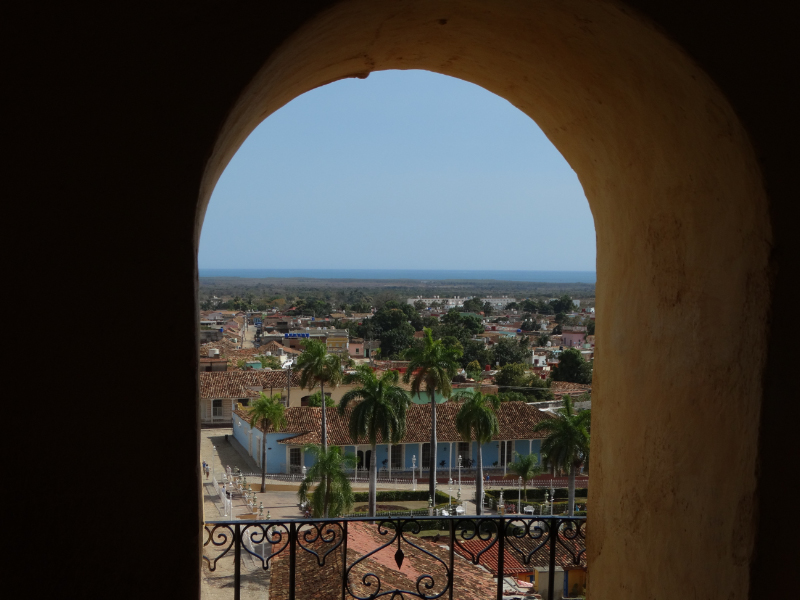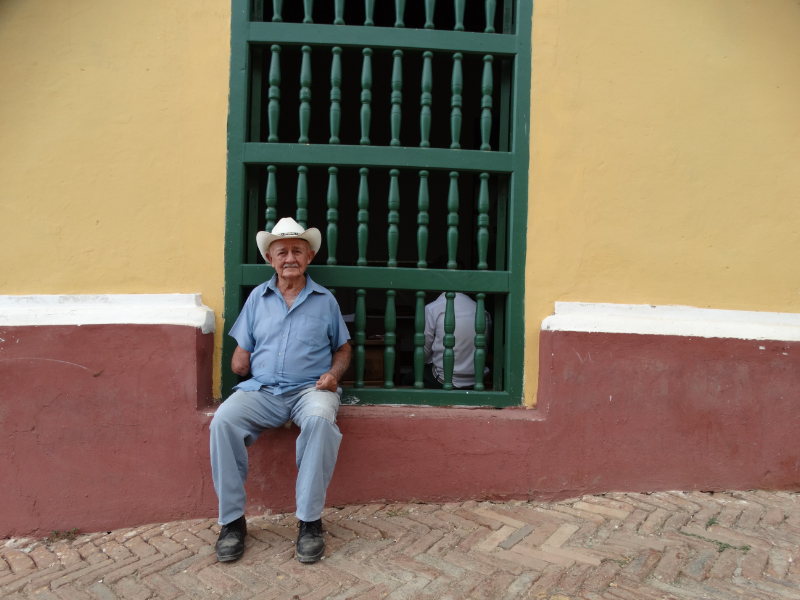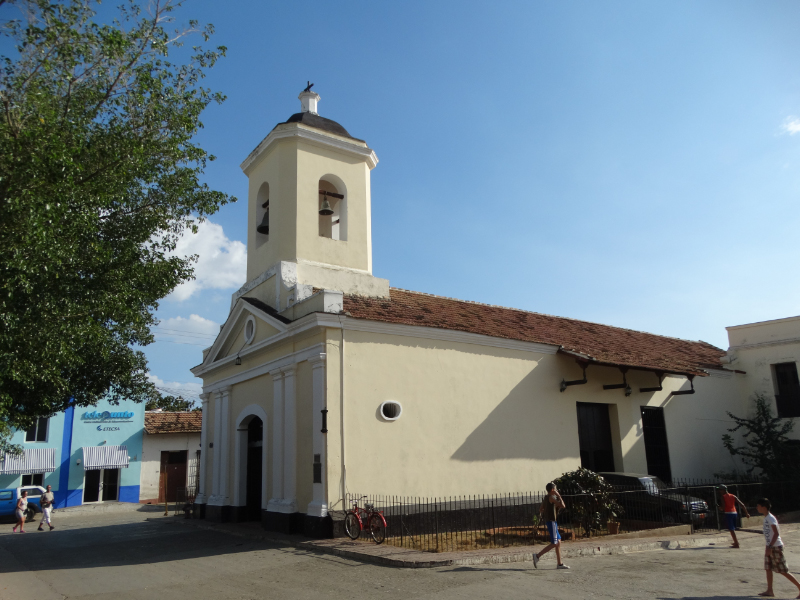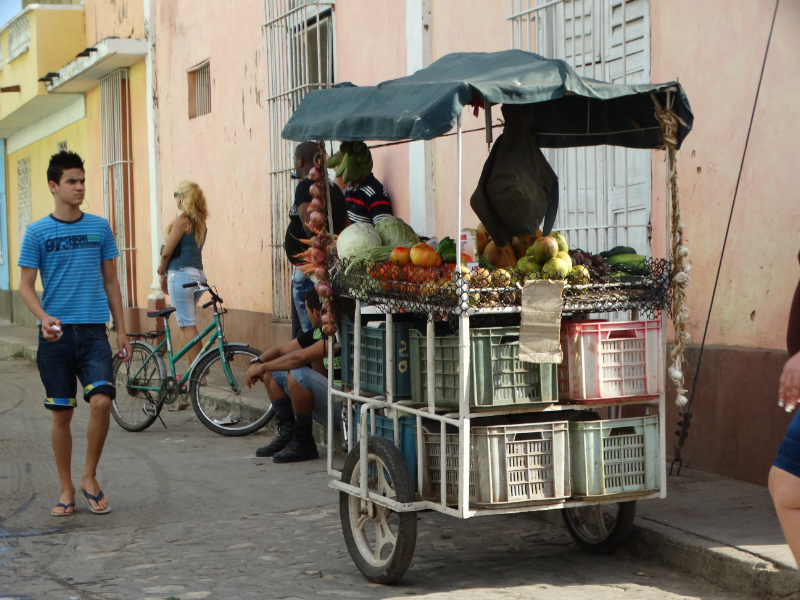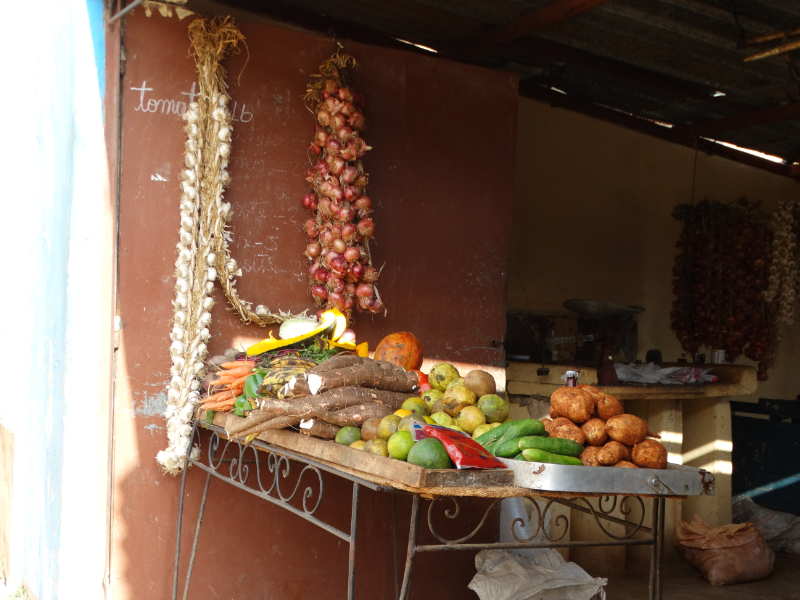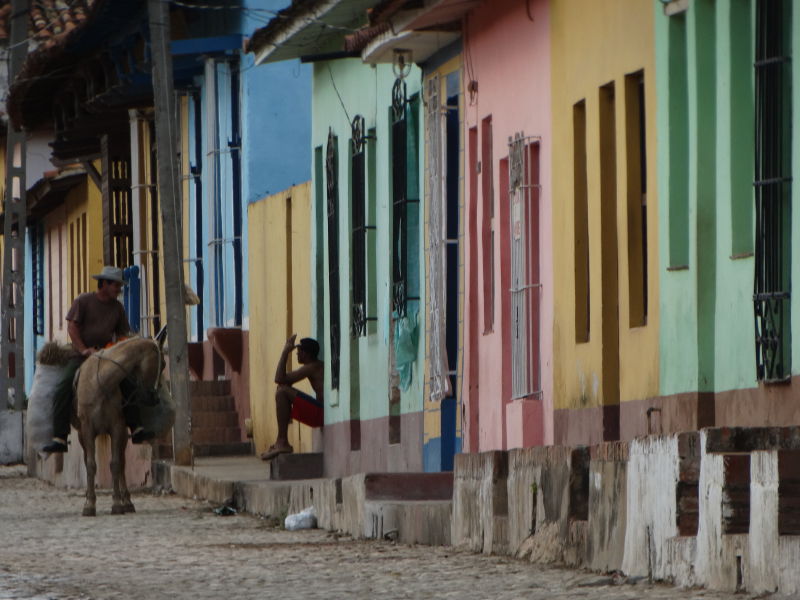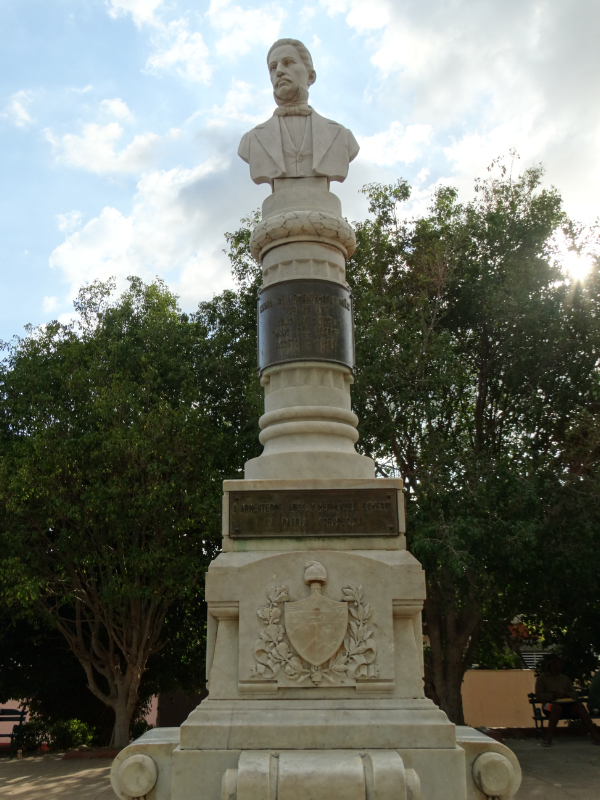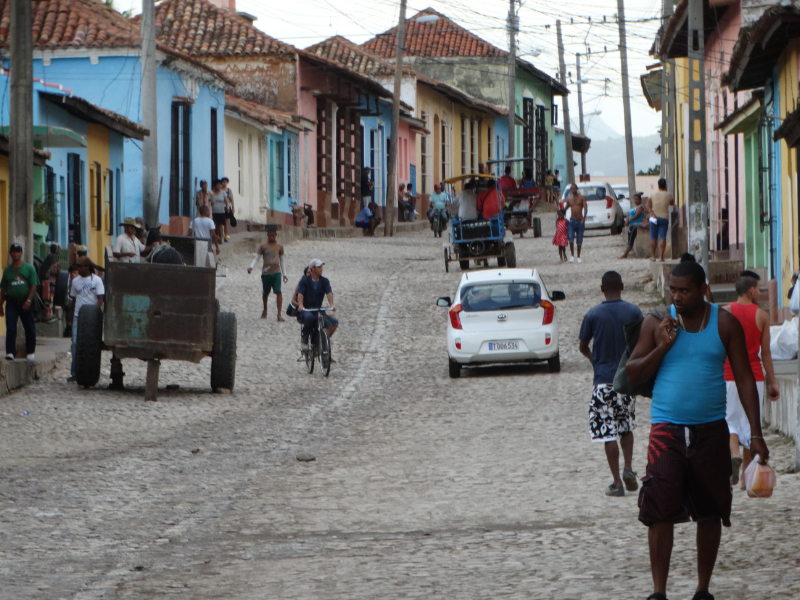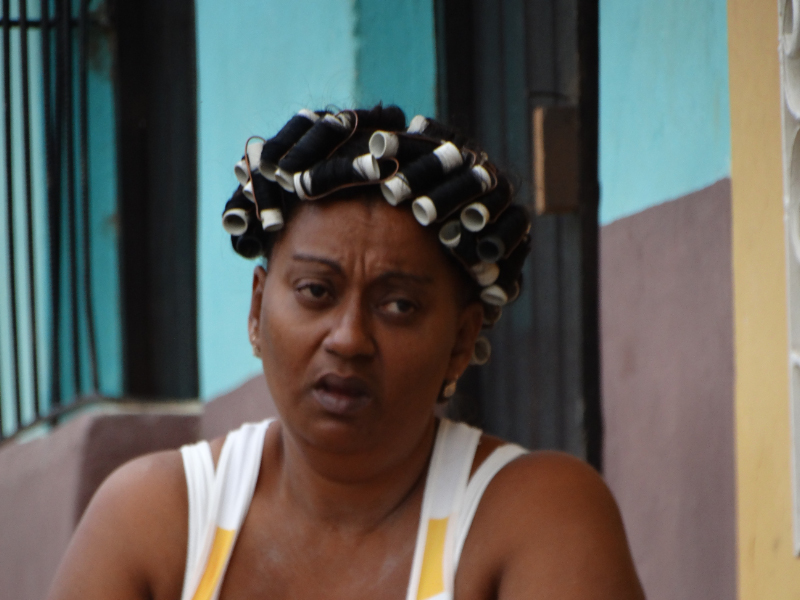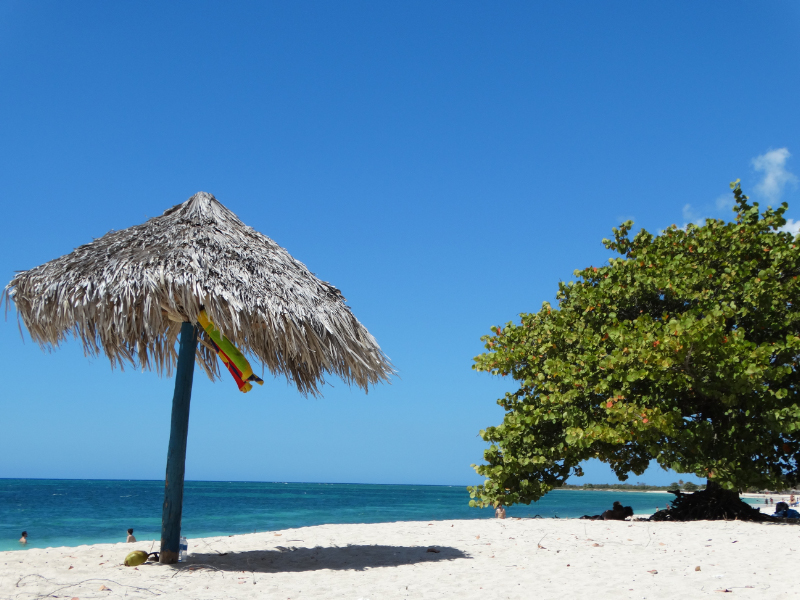Friday 6 to Monday 9 March
Trinidad is the Dubrovnik of Croatia, the Khiva of Uzbekistan, the Brighton of England. It is a step back in time, a town preserved where most houses are now restaurants or souvenir shops lining quaint streets.
In the case of Trinidad the streets are 500 year old cobblestones and the houses are brightly painted, providing a photographer’s paradise, especially in the late afternoon sun.
Museums in Cuba tend to focus on two areas.
- The colonial artefacts of richly decorated ceramics from France and China and the elaborate furniture carefully ported to the new world by the successful sugar cane farmers.
- The battle for Castro’s revolution and the ongoing battle to preserve it in the face of USA opposition.
We visited the museums representing both those interests. The old houses with massive rooms including ceilings that must reach 7 meters are richly decorated with marble columns, highly decorated walls, beautiful stone or ceramic floors. Doors are 2/3 the wall height, often three in each room allowing them to be opened up to maximise air flow in the hot, humid summer months. Colonnaded verandas add to the charm of the buildings and to the all important shade.
Furniture is mostly wicker and it seemed that every dining setting and every lounge setting had a pair of matching rocking chairs.
But what was extraordinary was the number of porcelain pieces, mostly baroque French in style portraying cupids, babies, couples in love and couples in fashion. There were vases and figurines. There were also a large number of tall Chinese cases.
The Museo Nacional de la Lucha Contra Bandidos is inside the former convent of San Francisco de Asís. Mostly annotated in Spanish, but we were able to understand that it was dedicated to the struggle against various counter revolutionary bands that operated out of the nearby Sierra del Escambray between 1960 and 1965.
We climbed the tower for a wonderful view over Trinidad, to the Sierra and also to the beach.
In the evening we enjoyed an apéritif on the Casa de la Música which are steps beside the Iglesia Parroquial. It is a nice people watching place.
Although a small city, the cobbled streets and the colourful houses provided plenty to do.
Touring is hard work and there are no weekends to take a breather. It was Sunday and Trinidad beach is famous for its silvery sands, so we shared a taxi for the 12km journey. The beach was lovely but the waves too choppy to try snorkelling off the beach. After ‘quiet time’ under a calabash tree on the sand, we treated ourselves to a waterfront lunch of fish. Alas no wine, but the beer and mojitos were good.
We returned to town and wandered through some of the outer streets. It was Sunday and the people of Trinidad seemed to spend a lot of time sitting in their doorsteps or chatting with neighbours.
e_header.jpg)





